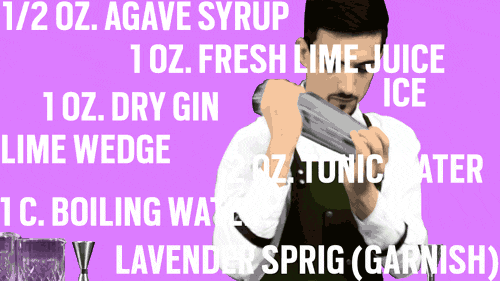About a decade ago, bartender Brad Farran moved to Brooklyn to help open Clover Club, Julie Reiner’s groundbreaking cocktail lounge. Among his first tasks: memorize a long list of cocktail recipes. “I made myself flashcards,” he says. “I would study them every day, have my roommate quiz me, and read them on the subway.”
And he mastered them…right up until opening night. “It didn’t amount to a hill of beans the first time I had three tickets up with two different drinks on each,” he says. “I was immediately in the weeds.”
Memory happens naturally; memorization does not. Memorizing something is work, straight up. Sometimes it sticks, sometimes it doesn’t. So bartenders have to tweak the process and try different routes to find methods that work for them. “Over time, it got easier as I figured out how to build drinks on a structural level, how to balance them,” Farran says. “This made it easier to keep things straight in my head.”
While many of our everyday tasks once were dependent on memorization—think dialing a phone, driving to a friend’s house, or remembering to meet a lunch date—these have more or less been given over to a constellation of gadgets. Bartenders, however, don’t have the luxury of outsourcing. Constantly checking a smartphone (or even a less obtrusive smartwatch) to recall the ingredients and measurements in a complicated drink breaks the rhythm behind the bar. And it looks unprofessional—guests will assume you’re texting and just ignoring them. Frequent checking of recipes also slows performance, which means fewer drinks per shift, which means fewer tips.
“If you have to pause to look up a spec or flip through Evernote, that’s seconds wasted,” says Anu Apte-Elford, who helped put Seattle on the cocktail map when she took over the Rob Roy bar in 2009. “Those seconds add up to minutes, and those minutes could add up to hours. Think of all the tips you’re losing by not getting drinks out fast. It’s your money and your time.”
At the same time, mixology has gleefully plunged into the thickets of bewildering complexity. Not only do today’s bartenders have to remember which brands of which spirits go in which cocktail, but now there’s a dash of this house-made tincture, two dashes of that obscure bitters and a rinse of some inscrutable liqueur.
So bartenders more than ever need to master the art of memorization, much as their 19th century forebears did. Knowing dozens of classic and house recipes are just a start; add to that tally maybe a dozen new drinks with each quarterly menu change.
“In all frankness, it’s my job, and I don’t consider memorizing 100 recipes any great feat,” says Audrey Saunders, who opened New York’s pioneering Pegu Club in 2005 and helped train dozens of bartenders, many of whom have gone on to open notable bars themselves. “In the same way a pianist is required to memorize notes and music, a mathematician equations, a scientist formulae, or an actor a script, it’s simply what we do,” she says. “There are no shortcuts. We signed on for the task when we signed up for the job.”
But how do they exactly do it? I spoke with a dozen bartenders who had a century’s worth of experience between them, and asked how they achieved the Odyssean feat of decanting an ocean of drinks into their heads.
No two approached the process exactly alike but I did find some common threads, which might be simplified and summarized as: rote, reason, and riffing.
ROTE
“The main thing I did was make flashcards and study them incessantly,” says Joaquin Simo, alum of Death & Co. and proprietor of Pouring Ribbons in New York. “Sitting on the subway. I’d always be flipping flashcards.”
Flashcards are cutting-edge 19th century technology—they were initially called “reading cards” and popularized thanks to an influential 1805 book on education. But they worked then and they work now. If there was a agreement among bartenders, it was the usefulness of flashcards—most seemed to have employed them at one point in their career or another.
Not only are they handy, portable tools that never threaten to shut down after dropping to one percent power, but even the act of creating them is a plus.
Jackson Cannon, owner and bar director of the famed Hawthorne in Boston, says there are multiple benefits. “It’s as much writing the drinks down as it is quizzing yourself,” he says. “Note cards remain an essential way to practice new information, and I actually require new staff to do it.”
Several others focused not just on words and measurements when memorizing, but also tried to picture their actions making the drink. “Imagine yourself going through the motions, reaching for the bitters, the bottles, the glassware, etcetera, while reciting the recipe,” says bartender and consultant Franky Marshall with Modern Bartender in New York, and an alum of Clover Club and Dead Rabbit. “I find visualizing helps to reinforce the actions once you’re actually making the drink.” (This technique of visualization is often employed by athletes, race car drivers and jockeys.)
REASON
Committing each element to memory is daunting, but as Farran discovered, understanding how these fragments work together from a broader, theoretical perspective can make memorization less daunting. Instead of memorizing hundreds of individual notes, you’re essentially recalling dozens of chords.
Several bartenders mentioned Gary Regan’s Joy of Mixology and its taxonomic approach to “families” of mixed drinks as a helpful memory aid. If you master the basics—how much spirit to how much modifier and sweetener for a handful of drink families—then you can focus on the specific ingredients, and turn to the “family” ratios for measures. For instance, sours, including the Margarita or Daiquiri, are generally two parts liquor, one part citrus and one part sweet.
Still, some drinks break from these standard formulas, or they include an ingredient that resists lodging in the mind. “The basics are straightforward,” says Geoff Wilson, an alum of The Violet Hour in Chicago and currently with Urban Farmer in Portland, Ore. “It’s the outlier ingredients that can be trouble—like crème de cacao.” Then it’s often back to rote memorization.
Or drawing on other mnemonic tricks. Anyone who has taken high school science remembers mnemonic devices like “Roy G. Biv” to recall the colors of the spectrum. Some use these for drinks that won’t stick—Apte-Elford says one nemesis of hers was the Corpse Reviver #2, for which she had a lot of requests but trouble recalling. “Finally I just started saying GLLCA—pronouncing it GLICKA in my head—and for that helped me remember: gin, lemon, Lillet, Cointreau, absinthe.”
RIFFING
Several bartenders mentioned that they remembered many drinks in their repertoire basically as riffs on another—instead of remembering abstract formulas, they master a few common drinks and then add and subtract ingredients to those to remember others.
“One advantage to working under Phil Ward [alum of Death and Co. and Mayahuel in New York] is that he was the ultimate Mr. Potato Head bartender,” says Simo, explaining that Ward often swapped key ingredients to craft something new. “Like, it’s a Little Italy but with this instead of that. There were a lot of similar builds where you were making substitutions.”
Legendary bartender and author Dale DeGroff, who’s widely credited for kicking of the craft cocktail boom in the 1990s from his perch at New York’s Rainbow Room, agrees that this approach can be helpful in mastering a long list. “The French 75 is easy because it’s a Tom Collins, but with Champagne instead of club soda—and lose the cherry and orange slice. The Sidecar is a sour, and then the Between the Sheets is a Sidecar with a split-base spirit—Cognac and rum.”
It’s not just the mustache wax and shirt garters—bartenders live in the past in other ways. At work they live in an oral rather than a written culture (nevermind digital), and memorization has always been essential in verbal societies.
And the more you do it, the better you get at it—ideally, the cocktail recipes become ingrained, like family. “It reminds me of the same fear non-actors have about acting,” says DeGroff. “You don’t memorize the lines. You play the scene, listening and reacting, and the lines just come. The emotion and the situation make the lines inevitable, in a way.”






